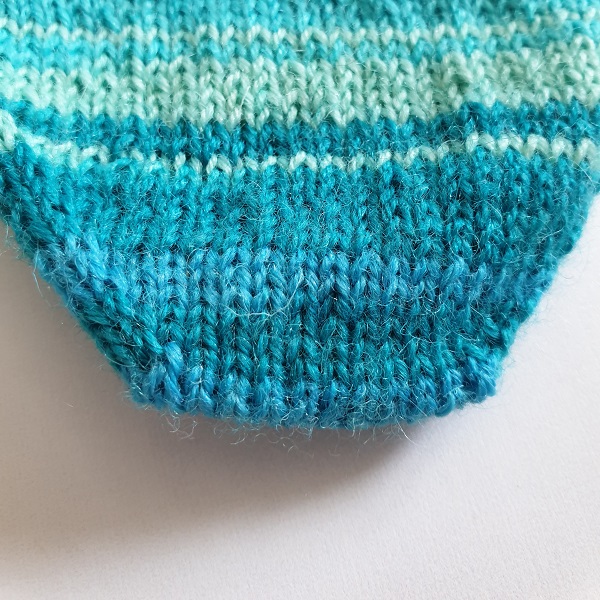A sock cuff, primed and ready to knit - magic loop style
Magic loop has to be one of the phrases that springs to mind when people think of ‘advanced’ or ‘complicated’ knitting. But really, nothing could be further from the truth.
It is really just a way of knitting in the round, when your stitches aren’t sufficient to stretch all the way around the cable of a circular needle. If you want to knit a hat in worsted weight yarn on a 60cm cable circular you can just cast on your stitches, join and knit around and around with a smile of happiness on your face.
If you have fewer stitches - say you want to knit a baby hat in sockweight yarn and only need 60sts there is no way on Gods green earth you can make those stitches stretch, no matter how hard you tug.
Yes, of course you can use DPNs but as a life-long DPN avoider (those pesky things are determined to slip out of my hands and into the depths of the sofa) I prefer a simpler solution.
Enter - magic loop.
All you do is to divide your stitches in half, treating the two needle tips of your cicrular needle as needle 1 and needle 2 respectively.
If you are keen to give it a go I have written out the steps for you below along with step by step images.
Or tap to the bottom to see a video of it in action. Honestly, it’s not as scary as you might think.
HOW TO MAGIC LOOP:
Cast on the required number of stitches - for socks for example - 64..
Work 2 rows of rib (not essential but it makes it easier to join.
Identify the halfway point - 32 sts - and slide stitches onto the cable portion.
Pull the cable through the halfway point to make a long loop. Stop when the two sets of stitches are resting on the needle tips.
Align the stitches with the cast on edge facing inwards and the tips facing away from you.
Hold working yarn in right hand and slide the stitches on the RH needle back down onto the cable.
Insert the now free RH needle tip into the first stitch on the LH needle and work in rib for 32 stitches.
Once you’ve worked these 32 stitches, you’ll have them on the RH needle, with the 2nd set of stitches still on the cable. Slide them back up to the LH needle.
With your right hand, pull the RH needle tip away from you allowing the stitches on the RH needle to slide back onto the cable.
This frees up with RH needle to work across the 2nd set of stitches.
Points to remember: Once you’ve worked across half the stitches always slide both sets of stitches back onto the needle tips. Then you can pull the RH needle out, sliding those stitches safely back onto the cable. This ensures that your stitches stay in two, neat manageable halves. All you are doing is working one half of the stitches, pulling the cable through and then working across the 2nd half.
STEP BY STEP
PIN FOR LATER




















